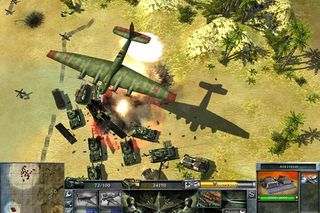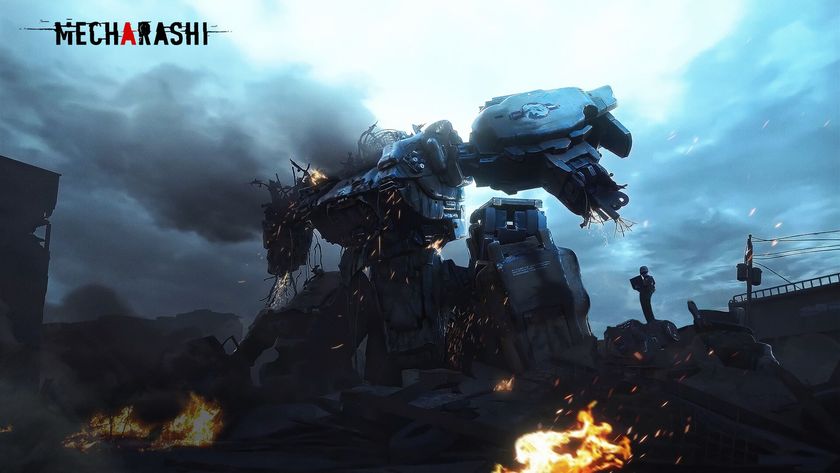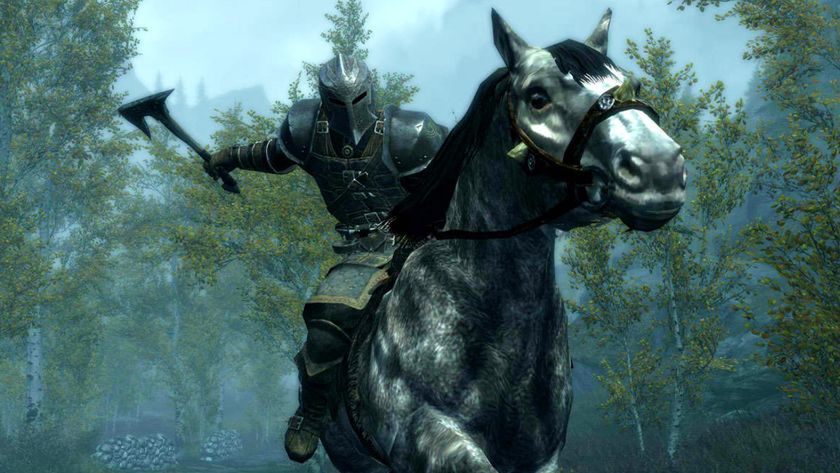War Front strategy guide
Our exhaustive guide will give you the upper hand on opponents online or off
Armored Units
Get in Line. One of the biggest mistakes a rookie commander can make is not paying attention to the way his armored units form up before going into battle. Place an artillery unit like the Priest, Wurfrahmen, or Katyusha at the front of a formation, and its weak defensive capabilities make it prone to being blown to bits before it can deal any devastation. If your tanks are in the back of a group, their shorter range means they won’t be able to engage the enemy first—and one of the main principles of tank warfare is that these steel beasts are intended to punch holes in enemy lines that the following vehicles and troops can exploit.
When forming an armored battalion for an advance into territory you know or suspect contains enemies, you should try to follow this guideline, but in saying this we realize there are some extremely hairy points during a mission where you simply don’t have time for this sort of preparation.
First row: Your heaviest and most powerful tank and/or anti-tank units.
Second row: Repair vehicles. They can repair the front-line tanks even in the middle of combat.
Third row: Mobile artillery and APCs. The front-line armor can protect them, and the APCs can respond to faster, smaller threats. The longer-range of the artillery can reach stationary targets in front of the armored group.
Sign up to the 12DOVE Newsletter
Weekly digests, tales from the communities you love, and more
Fourth row: AA vehicles. These crucial units are particularly vulnerable to cannon fire.
Fifth row: Infantry units, which can exploit chances to attack buildings or respond to enemy ground forces.
There is a caveat to this general rule: remember that tanks are not great choices for head-on assaults into the teeth of fire from anti-tank bunkers. Pull back to a safe distance and let the artillery due its job from long range as the other armored units protect them.
Keep ‘em in Line. If you do get your armored group lined up in an optimal formation, you can keep them in roughly that same order by double-clicking with the right mouse button on their destination point. This orders all units to move at the same speed. If you use the normal single-click, each unit will move at its own speed and the group will lose cohesion.
Time to Split. One good approach is to send a large armored group toward a target and then split it into two smaller groups. This confuses the enemy, making it hard to decide which group poses the greatest immediate threat and often diluting their fire. You can achieve the same effect by building two smaller groups from the get-go and ordering them toward the same general objective, but from different directions.
Don’t be Afraid to Sacrifice. Facing an armored vehicle that’s bigger and badder than anything you’re commanding? Try to distract its fire by presenting a target to get its attention as you move your tanks and other armor into position to fire on it from several directions at once. Even against turreted vehicles like the Kharkov Rampager that can rotate its main gun and fire in any direction, the time this takes will give you a chance to get in more and more hits. Unneeded resource collectors seem like a good choice as bait, but their hit points are so low they don’t last long enough to achieve the goal. A better choice, especially late in a battle, are Tech Level 1 or 2 units you’re no longer producing.
Oh, and sometimes you have to “put down” some of your own units in order to make room for better ones. You might have created, say, five or six Tech Level 1 tanks early in a mission that never made it into battle, and which are currently far from the front lines, and now find yourself at the Army Limit. Select these and press the Skull icon on the interface to have them self-destruct, freeing up Army Points to build fewer but much more powerful units in their place.
Save the Best. If you see a highly experienced armored unit taking a pounding, do everything you can to pull it off the battle line and send it to a safe position. We can not overestimate how important it is to have experienced units near the end of a battle — especially if your opponent has been churning out lower-grade units to replace more veteran units that were destroyed in combat.

Air Units (Controllable and Call-In)
Mix it Up. The ground-attack power of your fighter-bombers is impressive, but it’s smart to throw at least one interceptor into a squadron of four planes (the most one airfield can produce). The interceptor can tangle with enemy dogfighters while the fighter-bombers make their attack runs, and interceptors are also better at picking off infantry that’s somewhat spread out. Be ready to increase the number of interceptors escorting fighter-bombers if your opponent has flung a lot of his own interceptors into the sky.
Clear the Way. Whether you’re sending in interceptors, fighter-bombers, or Call-In Bombers, you must make an effort to minimize or eliminate any AA fire they’ll encounter along the way. Perform recon with either a single interceptor or some type of ground units to see what AA threats are in the way, then destroy as many as you can before the aircraft arrive at their destination. If the enemy has deployed AA vehicles, make it a point to target the most experience ones first. Their fire is significantly more deadly than lower-level units.
Bait the Hook. There will come times when it’s simply impossible to wipe out all the air defenses before a bombing run. In those instances, you should have interceptors and fighter-bombers precede the arrival of the slower Call-In Bomber. They will draw fire away from the lumbering plane and give it a chance to drop its lethal load.
It’s Not Over ‘Til It’s Over. You can gain more from a Call-In Bombing run than simply the destruction of buildings and units. The plane will continue on after dropping its bombs, giving you a chance to see everything below it. A successful Call-In Bombing raid is the best recon in the game—it kills enemies and provides you with vital information about what lies behind the lines.













